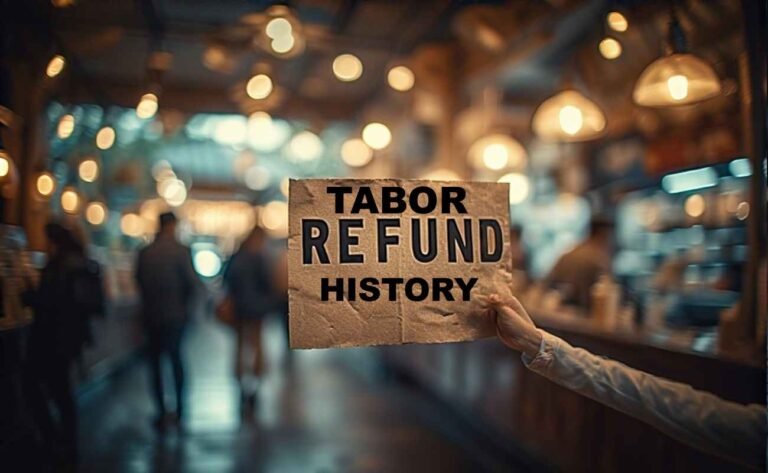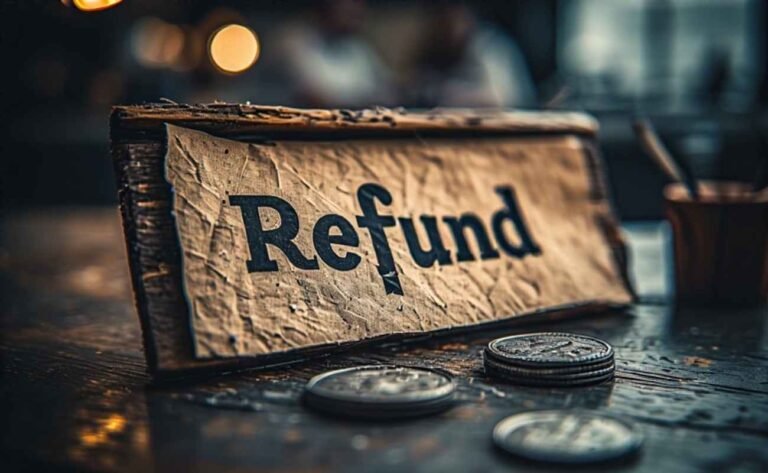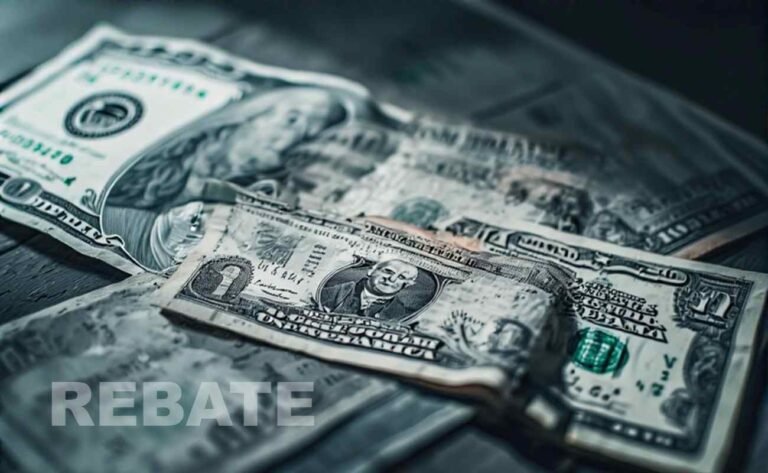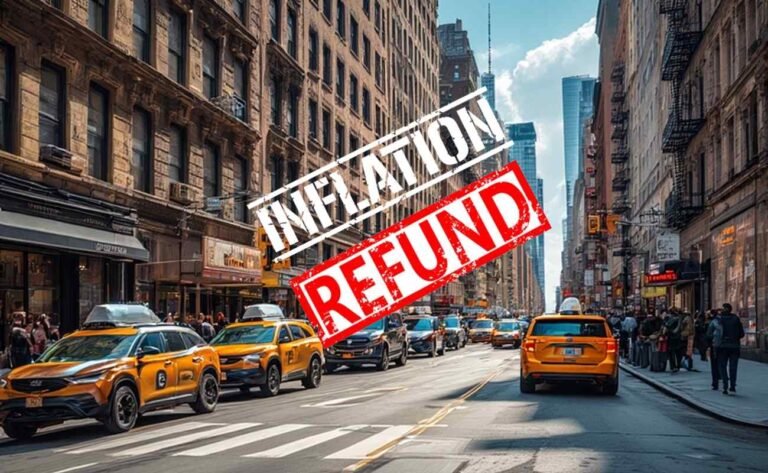Trump’s Tariff Rebate Plan: $2,400 for Families? Inside the Worker Act
The American Worker Rebate Act of 2025 represents a fresh proposal from Senator Josh Hawley to distribute tariff revenue directly to U.S. households as rebate checks, starting at $600 per adult and dependent child—potentially totaling $2,400 for a family of four. Introduced on July 28, 2025, following President Trump’s July 25 comments about using surging tariff funds for public rebates, this bill aims to offset economic pressures from recent trade policies while providing immediate financial relief to working Americans. However, it remains in early stages, facing pushback from some Republicans prioritizing debt reduction, and experts warn that tariffs could raise household costs by an average of $2,400 annually due to higher prices on imported goods.
If passed, the act would fund these payments through record-breaking tariff collections, which hit $27 billion in June 2025 alone, marking a 301% increase from the previous year. Eligibility mirrors past stimulus efforts, targeting U.S. citizens and residents with income limits phasing out benefits for higher earners—5% reductions for joint filers over $150,000 or singles above $75,000. While the proposal could reduce poverty by 6.9% and benefit 80% of residents at a $141 billion cost, its future is uncertain amid debates on fiscal responsibility and inflation risks. For now, no checks are guaranteed, but staying informed could help you prepare if it advances.
Breaking Down the Basics of Tariff-Funded Rebates
Let’s dive right in. You might have heard whispers about new government payments tied to trade policies. The American Worker Rebate Act isn’t just another bill—it’s a direct response to the influx of cash from tariffs. Senator Hawley pitched it as a way to give back to everyday folks who’ve felt the pinch from rising costs. But what exactly does it entail?
- Core Purpose: Redirects tariff revenues to provide tax rebates, easing the burden on families amid economic shifts.
- Inspiration Source: Stems from President Trump’s off-the-cuff remark during a July 25 press interaction, where he mentioned considering rebates due to “so much money coming in” from tariffs.
- Key Difference from Stimulus: These are rebates, not pure stimulus—think partial refunds on the indirect costs tariffs impose, rather than broad economic boosts.
- Potential Scale: Could deliver at least $600 per qualifying individual, scaling up if collections exceed forecasts.
- Broader Context: Aligns with ongoing discussions on trade, debt, and relief, but critics argue it might fuel inflation without addressing root issues.
I remember chatting with a neighbor last year about how tariffs jacked up the price of his new TV. If this passes, it could feel like a small payback. However, economists point out that the average family might still end up paying more overall.
Potential Payout Amounts Under the Proposal
How much cash could land in your mailbox? The act sets a floor, but actual figures depend on revenue. For a quick glance, here’s a table outlining scenarios based on family size and minimum guarantees.
| Family Size | Minimum Per Person | Total Minimum Rebate | Potential Increase if Revenue Surges |
|---|---|---|---|
| Single Adult | $600 | $600 | Up to 20-30% more, per projections |
| Couple (No Kids) | $600 each | $1,200 | Scaled by excess tariff funds |
| Family of Three | $600 each | $1,800 | Could add $100-200 per person |
| Family of Four | $600 each | $2,400 | Highest potential for larger households |
| Family of Five | $600 each | $3,000 | Proportional to revenue over $150B estimate |
These numbers come straight from the bill’s text and analyses. For example, a single parent with two kids might pocket $1,800—enough for a month’s rent in many areas. But remember, this scales with dependents, so larger families stand to gain more.
Additionally, if tariffs bring in over the projected $150 billion for 2025, everyone gets a bump. That’s the upside. On the flip side, payments cap out by December 31, 2026, to keep things timely.
Who Qualifies for These Proposed Payments?
Eligibility keeps it simple, drawing from tried-and-true models like the 2020 relief checks. But let’s list out the specifics to make sure you’re in the loop.
- U.S. Citizenship or Residency: You must be a legal resident or citizen—no exceptions for non-residents.
- Dependent Inclusion: Covers children and other dependents claimed on taxes, just like standard deductions.
- Income Thresholds: Full benefits for singles under $75,000 AGI or joints below $150,000; phases out above that.
- Filing Status: Based on your most recent tax return—married filing jointly gets the higher limit.
- Exclusions: High earners phase out completely; no benefits for those without valid SSNs or in certain tax situations.
- Special Cases: Seniors on Social Security might qualify if they meet income rules, but it’s not automatic.
For instance, if you’re a freelancer scraping by under $50,000, you’re likely golden. But a dual-income couple at $160,000? Expect a 5% haircut or more. This setup aims to target working-class folks hardest hit by trade shifts.
Phase-Out Rules and Income Adjustments Explained
Phase-outs prevent the wealthy from dipping in. Here’s a detailed table to show how reductions kick in, based on adjusted gross income (AGI).
| Filing Status | Full Benefit Threshold | Phase-Out Start | Reduction Rate | Complete Phase-Out Estimate |
|---|---|---|---|---|
| Single | Up to $75,000 | $75,001+ | 5% per $1,000 over | Around $87,000 |
| Head of Household | Up to $112,500 | $112,501+ | 5% per $1,000 over | Around $124,500 |
| Married Joint | Up to $150,000 | $150,001+ | 5% per $1,000 over | Around $174,000 |
| Married Separate | Up to $75,000 | $75,001+ | 5% per $1,000 over | Around $87,000 |
Calculations assume the minimum $600 base. For every $1,000 over the threshold, you lose 5% of your rebate. Take a couple at $155,000 AGI—they’d see a 25% cut, dropping their $1,200 to $900. It’s straightforward math, but it ensures aid goes where needed most.
Moreover, adjustments factor in dependents. A family of four at $160,000 might get $1,800 after reductions, still a decent sum for groceries or bills.
The Funding Mechanism: Tariffs and Their Role
Tariffs power this whole thing. The U.S. raked in $113 billion annually by mid-2025, up 86% year-over-year. But how does it work? Let’s break it down.
- Revenue Sources: Primarily from duties on imports, especially from key trading partners like China.
- June 2025 Surge: $27 billion collected, turning a deficit into a surplus—proof of concept for rebates.
- Projections for 2025: Over $150 billion expected, enough to fund $141 billion in payments without new taxes.
- Distribution Method: IRS handles it, similar to direct deposits or mailed checks from past programs.
- Risks Involved: Higher import costs could offset rebates, with Yale estimating $2,400 extra per household in expenses.
In short, tariffs act as a double-edged sword. They generate funds but hike prices on everything from electronics to clothing. If you’ve noticed pricier imports lately, this rebate aims to cushion that blow.
Legislative Timeline and Current Progress
Where does the bill stand? It’s early days, but here’s a chronological list of key events.
- July 25, 2025: Trump mentions rebate idea in response to tariff revenue questions.
- July 28, 2025: Hawley introduces the American Worker Rebate Act in the Senate.
- Early August 2025: Analyses emerge, like PolicyEngine’s report on $141B cost and 6.9% poverty drop.
- Mid-August 2025: Debates heat up; some GOP senators push for debt paydown instead.
- Ongoing: No House companion yet; needs full Congress approval and Trump’s signature.
- Potential Next Steps: Committee reviews in fall 2025, possible votes by year-end.
Progress is slow—bills like this often stall. But with public interest, it could gain traction. Keep an eye on Senate updates.
Economic Impacts: Benefits vs. Drawbacks
What could this mean for you? Analysts weigh in with mixed views. Here’s a balanced list.
Benefits:
- Immediate Relief: $600+ injections boost spending, helping with bills or savings.
- Poverty Reduction: Covers 80% of Americans, cutting poverty rates by nearly 7%.
- No New Taxes: Fully funded by existing revenues, appealing to fiscal conservatives.
- Family Focus: Extra for kids supports education, health, and daily needs.
Drawbacks:
- Inflation Risks: Extra cash could drive up prices, per Tax Foundation warnings.
- Cost Offsets: Tariffs might add $2,400 in annual expenses, neutralizing the rebate.
- Fiscal Concerns: Adds to debt if revenues dip; critics prefer deficit cuts.
- Uneven Distribution: Higher earners get less, but low-income folks benefit most.
Overall, it’s a trade-off. For many, the check outweighs cons, but long-term effects matter.
How It Compares to Past Relief Efforts
This isn’t the first rodeo for direct payments. Let’s table it against COVID-era checks for clarity.
| Aspect | American Worker Rebate Act | 2020-2021 Stimulus Checks | Key Differences |
|---|---|---|---|
| Funding | Tariff revenues | General budget/deficit | Trade-specific vs. broad |
| Amount | $600 min per person | Up to $1,400 per round | Lower base, potential upside |
| Eligibility | Income phase-outs at $75K/$150K | Similar, up to $80K/$160K | Tighter for high earners |
| Purpose | Offset tariff costs | Pandemic recovery | Targeted vs. emergency |
| Timeline | 2025-2026 distribution | Immediate in crises | Slower rollout |
| Total Cost | ~$141B estimated | Over $800B across rounds | Smaller scale |
The rebate echoes those checks but ties directly to trade. Back in 2020, I used my stimulus for home repairs—it felt like a lifeline. This could do the same for tariff-hit budgets.
For more on historical stimulus, check out our guide on Trump stimulus checks.
Expert Views and Ongoing Debates
Voices from all sides chime in. Here’s a roundup in list form.
- Hawley’s Take: “Hard-working Americans deserve to benefit from Trump’s tariffs.”
- Trump’s Support: Open to rebates but prioritizes debt reduction.
- Critics Like Sen. Johnson: “Use it for our $37T debt—madness must end.”
- Economists at Yale: Tariffs cost families $2,400 yearly—rebates might not cover it.
- Tax Foundation: Better to repeal tariffs than rebate; risks inflation.
- PolicyEngine Analysis: Benefits 80%, but fiscal responsibility key.
Debates rage on X and in Congress. One post noted, “Repeal tariffs altogether for real relief.” It’s worth following for updates.
For deeper insights, visit the official bill page on Senator Hawley’s site.
Steps to Prepare and Track Updates
Don’t wait passively. Here’s how to get ready.
- Check Your Taxes: Review AGI from last return to estimate eligibility.
- Update IRS Info: Ensure direct deposit details are current for faster payments.
- Monitor News: Follow sources like CNBC or Newsweek for bill progress.
- Calculate Potential: Use online tools to simulate your rebate.
- Budget Accordingly: Plan for the cash—pay debt or save, as suggested by experts.
- Join Discussions: Engage on platforms like X for real-time chatter.
Preparation pays off. If it passes, you’ll be ahead.
Exploring Similar Relief Programs
This isn’t the only game in town. Other proposals offer parallels.
- State-Level Rebates: Like Colorado’s TABOR refunds for surplus taxes.
- Federal Alternatives: Ongoing talks on child credits or SSI boosts.
- Tariff-Specific Aid: Check our detailed 600 tariff rebate checks guide 2025 for more.
Also, for broader context, see CNN’s take on trade impacts at Tariff rebate checks may sound awesome but they could be ‘quite inflationary’.
Wrapping Up: What This Means for Your Wallet
In the end, the American Worker Rebate Act could put real money back in pockets, but it’s no sure thing. Weigh the pros against potential cost hikes, and stay tuned. If you’ve dealt with tariff effects firsthand, this might resonate—share your thoughts below.







